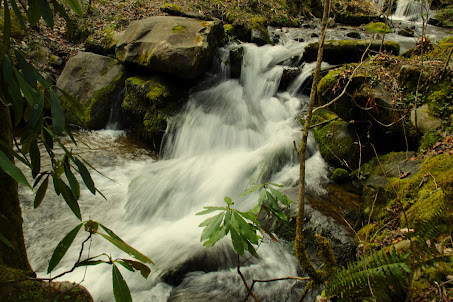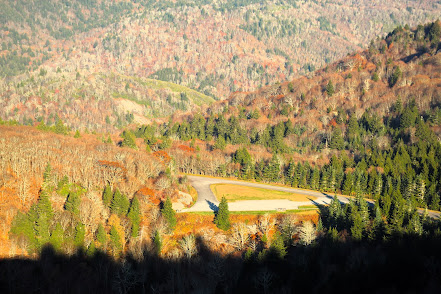After a prolonged hiatus, I have returned to the blogsphere. My last hike that I blogged about was a grueling endeavor done on what I learned was a partially torn tendon in my ankle. I had to go through physical therapy and get orthotic inserts before I could do any hiking. And since then, I can not attempt the type of hike I last wrote about. It has taken some time for me to come to acceptance of diminished ability but that is a necessary path for happiness. Rather that dwell on what I can't do, I express gratitude that I can still hike at my age and experience the sense of wonder that comes with the explorations. And I still have my DSLR and keyboard, and an itch to share those explorations with my multitude of fans. Injun Creek Manway in Great Smokey Mountain National Park is not an official trail but it is better than many of the trails you will find on maps. Beginning at the Greenbrier Ranger station, the manway follows the creek with crossings on several log bridges and two rock hoppers further up until it reaches the Grapeyard Ridge Trail at campsite 32. One of the great pleasures of hiking in GSMNP is the opportunity to transport oneself back in time through artifacts of the communities that existed prior to the establishment of the park. I love to imagine what their lives were like and envision what the area looked like. Homesites can often be identified by remnants of chimneys or foundations, or the ubiquitous patches of daffodils.
When I first heard or read about Injun Creek, I heard the story that many are familiar with, that Injun was not a misspelling of Indian but of Engine. In the 1920s a steam powered engine for sawing lumber was used to build Greenbrier School. On the return trip, it toppled over at a switchback and came to rest in the creek. There is much debate about this. I have read accounts that a 1926 map identifies it as Indian creek. (My Gaia map identifies it as Engine Creek which is certainly wrong). Whatever the truth may be, never let it interfere with a good story. "This is the West sir. When the legend becomes fact, print the legend" - The Man Who Shot Liberty Valance.










